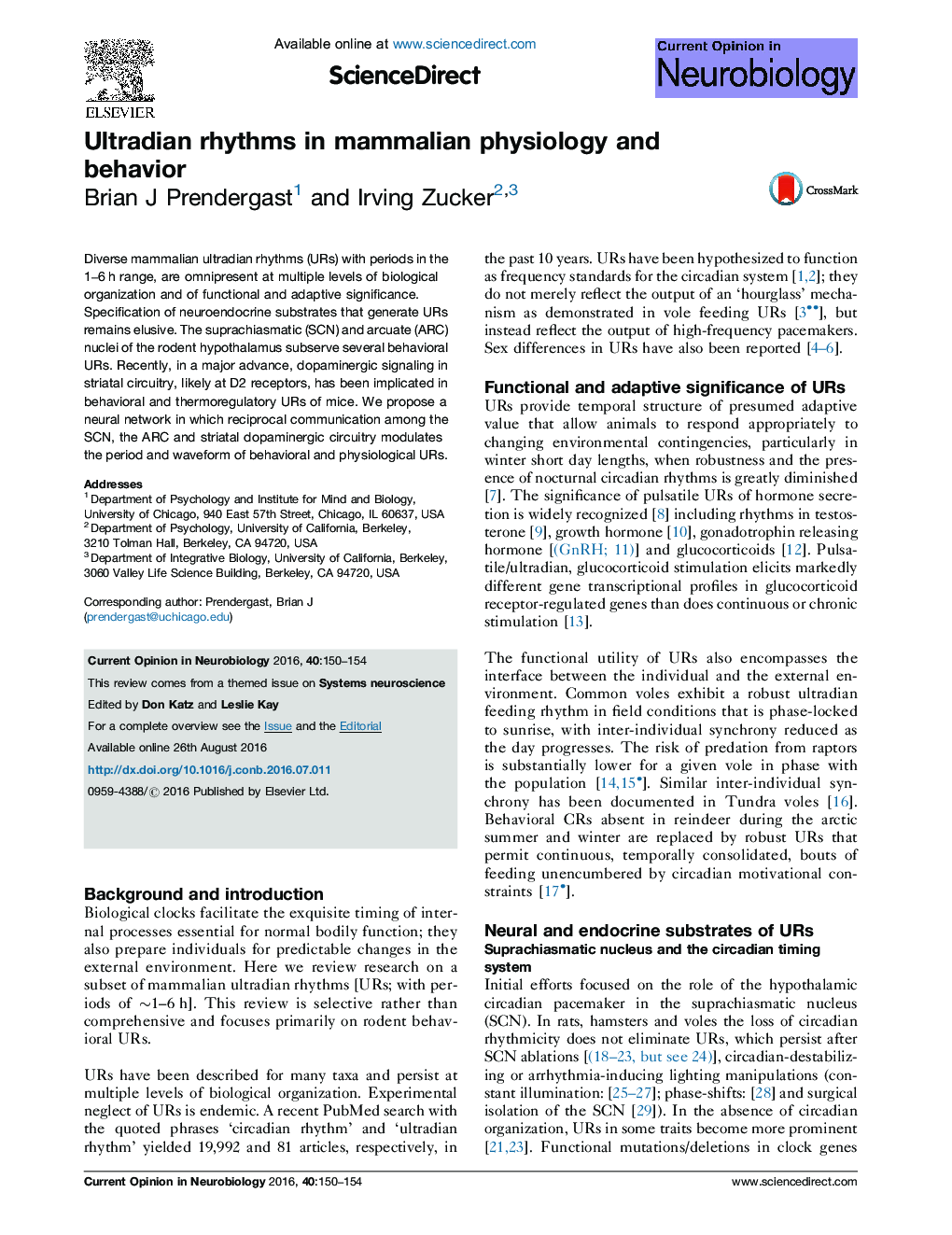| Article ID | Journal | Published Year | Pages | File Type |
|---|---|---|---|---|
| 6266076 | Current Opinion in Neurobiology | 2016 | 5 Pages |
â¢Ultradian (<24 h, typically 1-6 h) rhythms (URs) in behavior are ubiquitous.â¢Behavioral URs do not appear to depend on a functional circadian system.â¢Specific hypothalamic lesions abolish behavioral URs.â¢Striatal dopaminergic activity can tune the frequency of URs.â¢We describe a model that may integrate hypothalamic and striatal regulation of URs.
Diverse mammalian ultradian rhythms (URs) with periods in the 1-6Â h range, are omnipresent at multiple levels of biological organization and of functional and adaptive significance. Specification of neuroendocrine substrates that generate URs remains elusive. The suprachiasmatic (SCN) and arcuate (ARC) nuclei of the rodent hypothalamus subserve several behavioral URs. Recently, in a major advance, dopaminergic signaling in striatal circuitry, likely at D2 receptors, has been implicated in behavioral and thermoregulatory URs of mice. We propose a neural network in which reciprocal communication among the SCN, the ARC and striatal dopaminergic circuitry modulates the period and waveform of behavioral and physiological URs.
